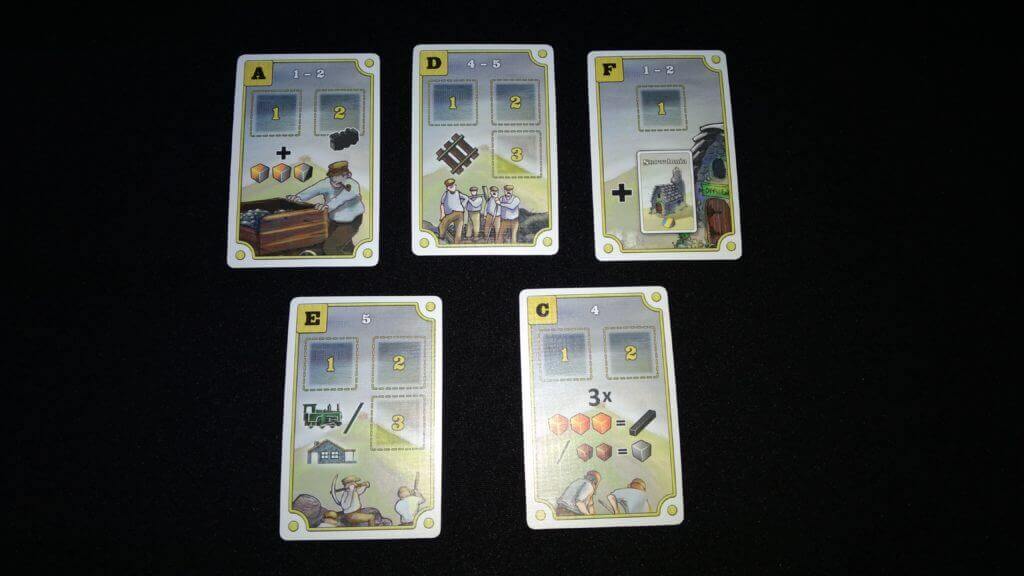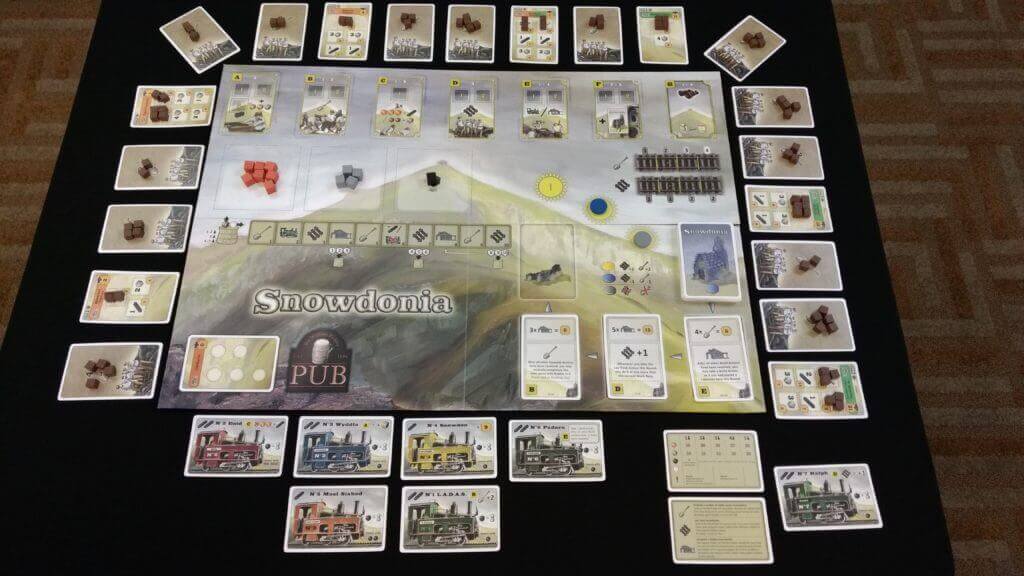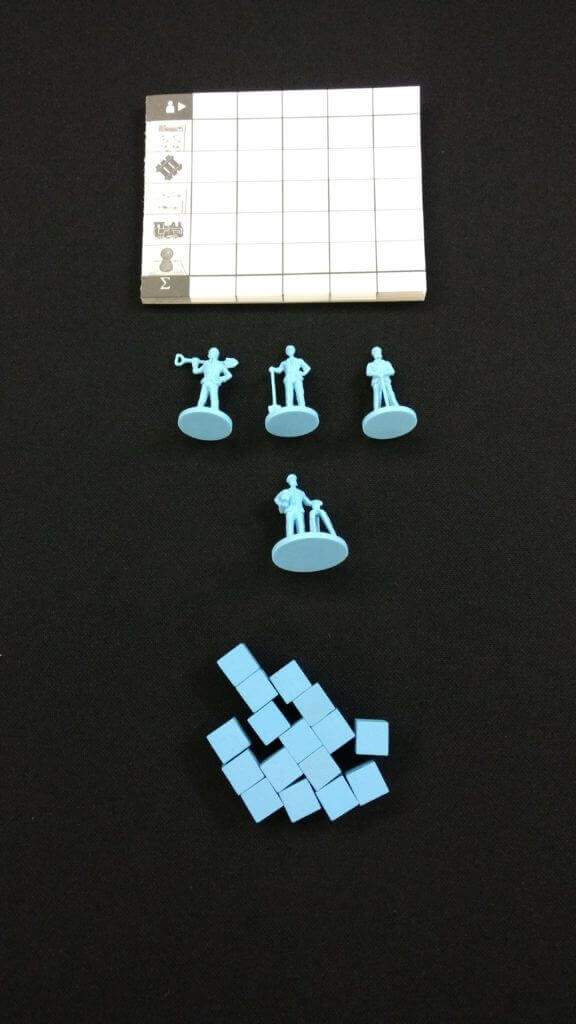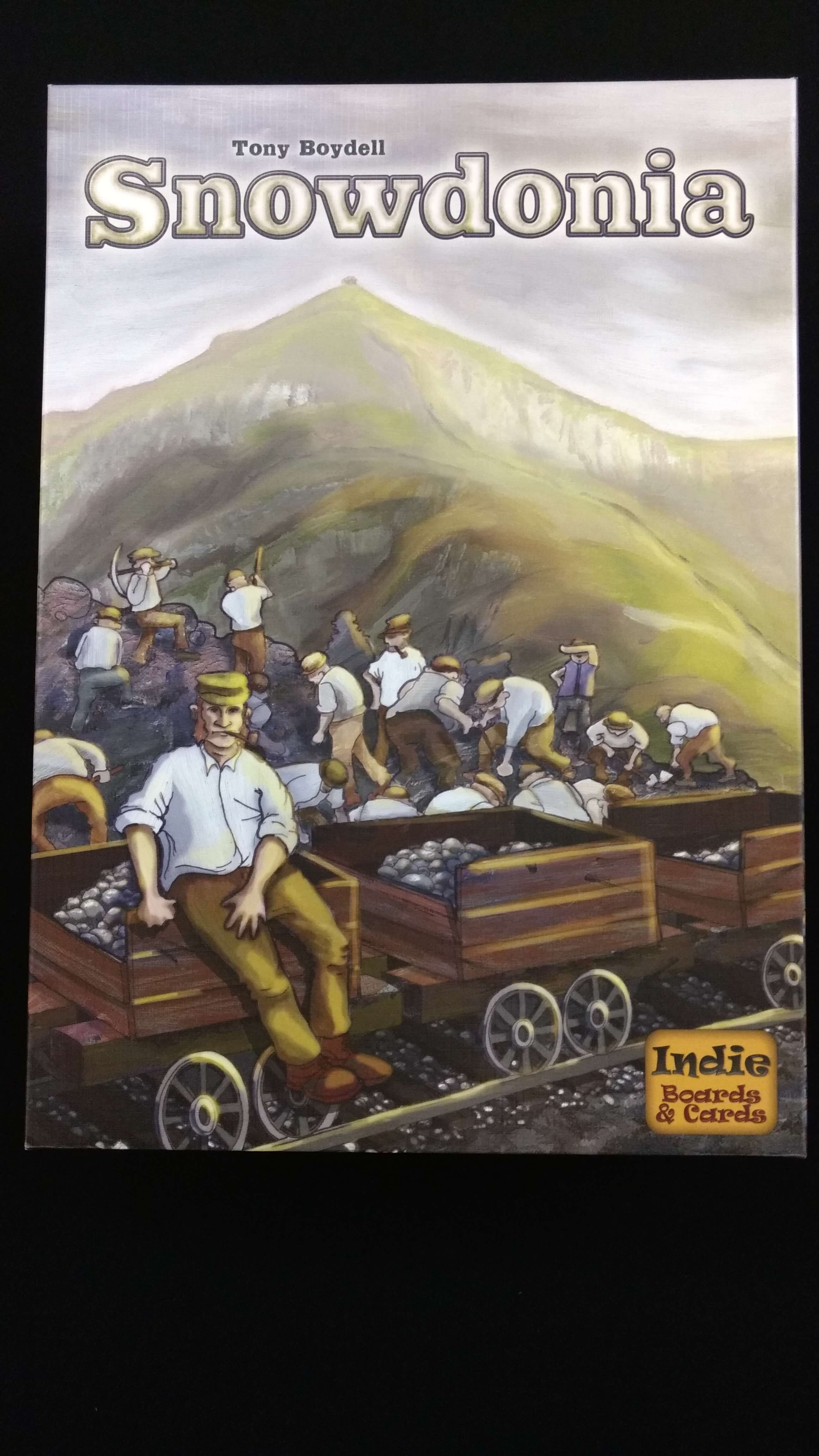Snowdonia – A Board Game Review
Snowdonia is a 1-5 player worker placement game by Tony Boydell. The advertised time is 30-90 minutes and is for ages 10 and up.
Snowdonia is my latest acquisition, so clearly, I need to review it. I’ve only played solo (for now), but the basic game play doesn’t change with the number of players.
As mentioned above, this game is a worker placement game. Players will take turn placing their “workers” (tokens, pawns, or whatever the game supplies to represent these workers) on an action space on the game board. There are limited number of action spaces and, usually, once a space has been taken it cannot be used for the rest of the round. Once the round ends, players take back their workers and all the action spaces are available again for the next round.

In Snowdonia, players are work gangs working to build a rail line up the Snowdonia mountains in Wales in 1894. Rubble needs to be cleared, rail needs to be laid, and stations need to be built. Players will compete against each other and an automated company “controlled” by the game.
To start, each player takes all the pieces in their chosen colour – 16 ownership cubes (used to claim ownership of built items for points), three worker pawns and one surveyor. Next, place the board out on the table and, depending on the number of players, place action cards on the top of the board to change the number of spaces for each action. The board defaults to a 3-player game, so these cards are used if there is a different number of players. The Stock Yard is located on the board, indicated by three outlined squares. The left square is for iron (orange cubes), the centre is for stone (grey cubes), and the right square is for coal (black squares). The number of cubes placed on the board is printed in the middle of each square. Then, based on the number of players, more iron, stone, and coal cubes will be placed in a cloth bag. Each round the stock is replenished by randomly drawing a number of cubes from the bag. There will also be some white cubes in the bag, and these represent events that the game controlled company will do. Next, the contract cards are shuffled and placed on the board on the draw stack on the right side of the board, face down. The backs of the contracts show the three different kinds of weather that can occur: Sun, Rain, and Fog. Each type of weather affects some of the action spaces. Just above the contract draw stack are two rail tracks. Place a black game marker (black disc) on the space indicated by a dot. The top track shows how much rubble can be cleared per action and the bottom track shows how much track can be built per action. These markers will move left and right, depending on the weather. Each player then places their surveyor on the space in the bottom left of the board and one of his workers in the space labelled “Pub”. Then, around the outside of the board, players will place track and station cards, based on the number of players. Then, according to the numbers on the track cards and the upper building spots on the stations, a number of brown cubes (representing rubble) are placed. Take the engine cards and randomly remove one and set it off to the side. The remaining engines are placed by the board and will be available to be purchased by the players. Finally, draw the first three contract cards and place them in the appropriate spaces on the board. The second and third cards will indicate the upcoming weather – place the matching coloured discs (yellow for Sun, blue for Rain, and grey for Fog) on the sun icons on the board. Players will know what weather is coming up and can plan their turns accordingly.

Each round has 5 steps. Assign Labourers, Resolve Actions, Restock Contract Cards, Check the Weather, and Restock the Stock Yard. Each step is completed before moving to the next step.
Assign Labourers: Starting with the Start Player, each player will place one of his two workers on an action space. Each action may have two or more spaces, so multiple players can place workers on the same action. Once all those spaces are filled, no more workers can be placed there. After everyone has placed their first worker, the second worker will be placed. If players have an engine and a coal cube, the can spend the coal to take their third worker from their Pub. This must be done before workers are placed. If anyone has a third worker, it is placed after all the second workers are placed.
Resolve Actions: This is the meat of the game. Starting with Action A, workers are resolved and the player gains the benefit of the action. The following are the actions and quick description of them.
Action A is the Stockyard – a player can take three cubes from the Stock Yard in any combination of Iron, Stone and Coal. The only restriction is that only one coal cube can be taken. This is also the action that players use to take the Start Player position.
Action B is Excavation – this is how players remover the rubble (brown cubes) off the track and station cards. The top rail track indicates how many cubes are removed (1-4) per action. Players have to take as much rubble as they can. For example, if the track is on “3”, players have to take 3 brown cubes if available, even if they don’t want to. All rubble excavated is kept by the player. This action follows the track: the first track card must be completely emptied before emptying the second track card, etc. This also includes station cards (tracks must be cleared before clearing stations). When players clear off the excavation spaces on a station, they place an ownership cube for end of game scoring.
Action C is the Works – players can convert iron cubes for iron bars (used in construction) and rubble into stone (also used in construction). They can convert up to three times and in any combination, as long as they have the cubes to do so.

Action D is Lay Track – players can flip empty track cards over for one iron bar per card. The lower rail track indicates how many cards can be flipped (1 or 2). Like Excavation, players have to lay as much track as they can, based on empty cards and available iron bars. Once a card is flipped over, the player places one of their ownership cubes on the card for end of game scoring.
Action E is Build – there is how players can build stations. Once all the rubble has been cleared to a station (track does not have to be laid), players can spend stone or iron to build part of a station. Each station has a limited number of build spaces and it’s first come, first served. The point distribution is uneven, so there is even more incentive to build first. Once a spot has been built, the player places one of their ownership cubes for end of game scoring. This space is also used to buy one of the available engine cards for an iron bar. Each engine allows players to access their third worker (with a coal cube) and each engine has a special ability that players can use (no payment needed). Players may also use this action to purchase a new engine. If so, the old engine is placed back in the available stock.
Action F is the Site Office – this is where players can claim one of the three face up contract cards. Each card has two parts: and end of game scoring condition and a special action that can be used once per game. The special actions are associated with the action spaces on the board. The special actions are activated (in player order) before resolving the workers on that space. For example, if a player has a special action for Action E, that player announces they are using that special action. Then the workers are resolved. While players will earn points for building track and stations, the majority of points come from contract cards, so ignore these cards at your own peril.
Action G is Move the Surveyor – when resolved, the player will move his surveyor up one station. Each station has points and players will score the points associated with the station the surveyor is on at the end of the game.
Once all the actions have been resolved, players take back their workers (the third, if used, goes back to the pub) and the contract cards are restocked. If there, remove the left most card and shift any remaining cards to the left. Fill any spaces with new cards from the draw stack.
Checking the Weather means players will see what the weather will be like two rounds in the future. The top card of the contact card draw stack will indicate the weather. Move the two weather discs up once space and place the new disc on the last space. The disc at the top indicates what the next round will be and this can affect the Excavate and Lay Track actions. Sun means that the excavate marker moves up two spaces and the lay track marker moves up one. Rain means each marker moves down one. Fog means that the Excavate and Lay Track actions are unavailable for the following round. Finally, remove the top disc from the board.
Finally, the Stock Yard gets replenished. Based on the number of players, a certain number of cubes are drawn from the bag. Any orange, grey and black cubes are placed in the Stock Yard. White cubes are used to activate events that the game controlled company will do.
Just below the Stock Yard is a track that shows shovels, tracks, stations, an engine, and engine upkeep. When a white cube is pulled, it is placed on the first empty space. So, the first time it will be placed on space 1 that shows a shovel. That event is executed and the white cube stays there. The second cube pulled will go to space 2 and so one. Spaces 4, 7 and 10 also indicate that any white cubes behind those spaces are put back in the bag. Any events that have the company clear rubble, lay track, and build stations are done immediately and are no long available for the players to complete. And the company is much more efficient than the players. The company clears whole cards of rubble, not just a number of cubes, lays track even if there is still rubble on the card and build on every available space on a station. Space 2 indicates that the engine cards are available to be purchased. Space 6 indicates that all player who have an engine must spend one iron bar for maintenance. If the player cannot or does not want to spend the bar, the engine is returned to the available stock.
The game continues until the last track has been laid. If a player laid the last track the game is over at the end of that round. If the last track was laid because of an event, there is one more round then the game is over.

Scoring consists of adding up all the points players earned for laying track and any station excavation and building. One of the engines is also worth points. Once this is done, then players will take ownership cubes from the cards and use them along with rubble they have collected to fulfill any of the contract cards they have. These cards have certain requirements and if met, will score the player points. Each ownership and rubble cube can only be used to fulfill one contract card. Finally, add any points earned by the surveyors and whoever has the most points wins.
Worker placement is one of my favourite mechanics. It forces you to plan turns in advance and also to have back up plans if the action space you want is taken. With only two (or three) workers, you are hard-pressed to get everything you want done when you want them done. There is also the guessing game where each player tries to figure out what everyone else wants to do. Going first in worker placement games is very important, but often taking first player means you don’t get everything you want that round.
Snowdonia is easy to understand. Actions make sense, thematically, and the flow of the steps is easy to follow. This may not be the kind of game I would use to introduce new people to the hobby, but anyone who has some experience playing Euro games should be able to pick this one up. Of course, knowing what to do and doing those things well are two different things.
The game also has some variable set up, which gives a new experience each time. The track cards are shuffled, so the order they are placed is always different. Weather patterns are also different each time.
Another aspect of the game I like is the resource system. There is never a consistent resupply, so you never know when iron, stone or coal will become rare or exhausted. The game wants you to be efficient with your resources. For example, players should use The Works action when they can full use the three conversions. However, as people hoard resources, the likelihood of white cubes being pulled increases. Nobody wants the game controlled company to do any work, and since the only way to get cubes back into the bag is to use them, players often are forced to do actions before they want to, sacrificing efficiency to keep the events to a minimum.
I also like the way the game scales the available action spaces based on the number of players. A great worker placement makes players fight for the actions they want and this game does not disappoint.
The only downside is that this game isn’t as easily obtained as others. There are copies out there, but finding them may be difficult. Now, I’ve heard that a new printing may be happening, and if so, copies should be more easily acquired.
If you’re interested, there are some play through videos on the Internet that aren’t hard to find.
Guest Article By:
Kevin Shillinglaw | Contributing Author


Recent Comments